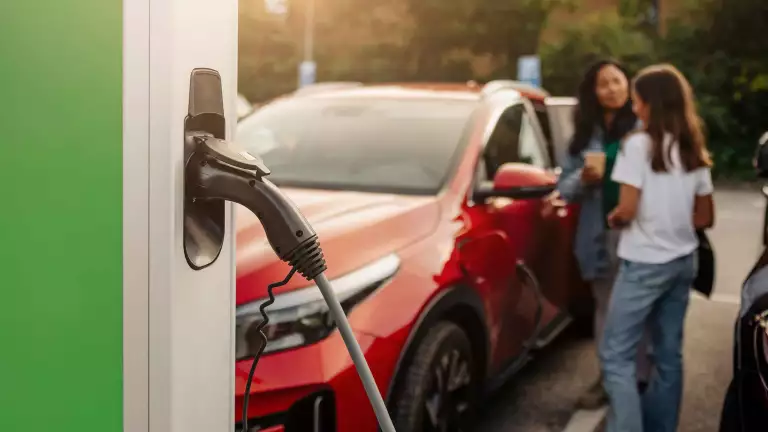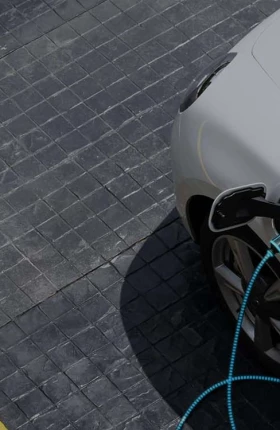Right now, the US electric vehicle (EV) market is facing a fresh wave of change following new tariffs on imports from China.
This year:
- Punitive tariffs on EVs from China will increase from 25% to 100%.
- Punitive tariffs on lithium-ion batteries and their components will increase from 7.5% to 25%.
By the end of 2026, imports from China of critical raw minerals such as natural graphite used in batteries, as well as semiconductors, rare earth magnets (used in electric motors), and steel and aluminum will also face tariff increases.
The So What
“The use of tariffs by the US are both preventative and reactive. Direct implications are relatively muted in the near term. But the tariffs could lead to seismic shifts in the years ahead,” says BCG Managing Director and Partner Nathan Niese, who leads the EV topic for BCG globally.
Few vehicles built in China by Chinese automakers (OEMs) are sold into the US today. Yet, China’s advantage as a market leader has led some Chinese-headquartered automakers to target new export markets, including the US.
- US imports of battery and battery components from China totaled some $13 billion alone in 2023.
The US automotive market has already been undergoing a partial reset over the past 12 months, as customer preferences, regulations, and automaker plans continue to evolve.
“The tariffs are ratcheting up a period of instability that will only begin to recede after a range of strategic questions, actions, and reactions take place among and between government and industry actors.”
Now What
All of these new tariffs will have serious implications for:
Global Trade. The EU is currently investigating Chinese EV makers to determine whether subsidies are fair, before deciding whether to impose tariffs of its own. The US announcement on tariffs increases the likelihood and speed of the EU taking action, according to Niese. China’s Ministry of Commerce has already said that it will take measures to defend its interests. This could involve not just tariffs within the automotive sector but touch other strategic industries too.
US Consumers. It is unclear where or when the next generation of lower-priced EVs may emerge now that Chinese-produced vehicles will be more expensive for US consumers. The tariffs are likely to impact both selling price and EV adoption rates in the US. BCG research suggests that 70% of US consumers are considering buying an electric vehicle, but that future EV adopters expect both lower prices and increased performance and charging capabilities.
China’s EV and Battery Manufacturers. Multiple avenues for growth exist beyond the home market given the competitiveness and scale of Chinese automakers and battery producers. Several players have facilities in Europe and the US that they could further scale, and local partners with whom they could extend licensing arrangements. There are also options for China’s original equipment manufacturers (OEMs) to double-down on emerging EV markets, including Southeast Asia and the Middle East. And some of China’s EV OEMs are establishing a manufacturing presence in Mexico as a means of reaching Latin American markets and serving North American markets indirectly. However, this move could lead to more action on United States-Mexico-Canada Agreement (USMCA) trade policies in due course.
US Automakers. Once the new tariffs kick in, EVs manufactured in North America will be more cost-competitive than those imported from China. However, US OEMs should not continue with business as usual and will need to reevaluate network strategies, review strategic partnerships and refresh component cost targets. And although tariffs protect the auto industry in the shorter term, it may be counterproductive in the longer term. Protected environments can restrict healthy aspects of competition, such as encouraging uptake of the rapid product development capabilities that Chinese OEMs and suppliers have increasingly demonstrated. “The legacy US automotive sector still needs to prove it can make the e-mobility transition and not fall further behind on a global stage,” says Niese.
Wider Supply Chain. Protectionist policies will reconfigure the next investment round, including who provides the capital, where investments are made, and what financial returns are possible. Although the US industry is ramping up efforts to diversify battery supply chains, the tariffs have arrived before domestic and friend-shored capacities are well established. The EU faces a similar scenario. In the interim, costs for processed materials such as nickel sulfate or cell components such as graphite anodes will increase for US players that were importing these products. Industry players in countries such as Japan, South Korea, and Australia previously benefited from country-specific restrictions included in the Inflation Reduction Act and are again likely to witness increased demand for their products.




